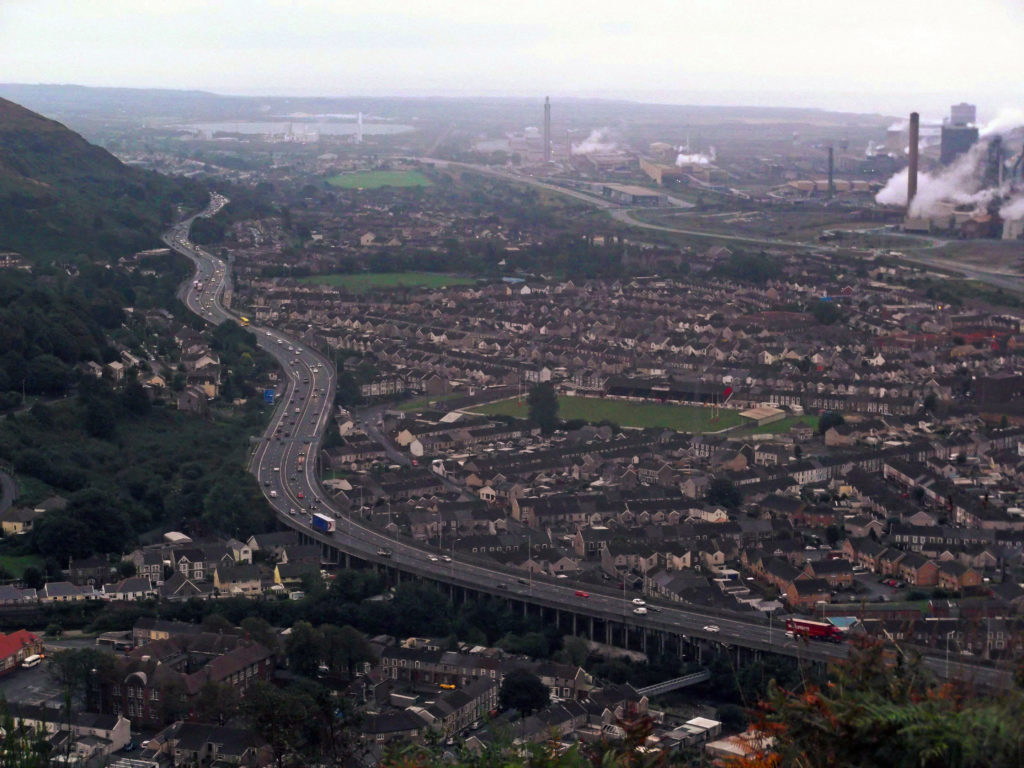Port Talbot worst in UK for PM10 pollution
The South Wales town of Port Talbot topped the list of UK urban areas for days that exceeded safe levels of particulate matter during 2018, according to Defra figures.
The Port Talbot suburb of Magram — near the M4 corridor and the UK’s largest steelworks – endured 10 days last year where levels of PM10 (course particulate matter) reached ‘moderate or higher ‘— more than any other urban location in the country.
A banding of ‘moderate or higher’ for PM10 pollution on the UK’s Daily Air Quality Index means that levels are over World Health Organisation limits, exceeding the 24 hour mean of 50 μg/m3.
Scunthorpe, another steel town, also had high levels of PM10 – exceeding limits on 8 days last year – as did urban areas with particularly high levels of road traffic such as London Marylebone and Chatham in Kent.
For fine particulate matter (PM2.5), Chatham and London Marylebone also featured highly as their roadsides exceeded WHO limits on 15 days and 10 days last year respectively.
The figures came from Defra’s annual air pollution statistics report, which was published last week, and found that roadside PM10 levels have not improved since 2015.
The report looked at the concentrations of particulates (PM10, PM2.5), nitrogen dioxide (NO2) and ozone (O3) from monitoring sites measured by the Automatic Urban and Rural Network (AURN).
The report found that annual mean concentration of PM10 at UK roadside monitoring sides increased slightly last year compared to 2017 and 2016.
However, annual hours when roadside PM10 pollution was moderate or higher decreased substantially from 116 hours in 2017 to 65 hours in 2018.
While there were also, on average, fewer hours of ‘moderate’ or higher levels of NO2 pollution last year compared with 2017 at roadside sites, overall levels remained high, with an annual mean concentration of 33 µg/m3.
The data also revealed a significant decrease in NO2 pollution over the past two decades, with levels across the UK almost halving since 1997.
When contacted by AirQualityNews about Port Talbot’s PM10 levels, Neath Port Talbot council said it would be studying Defra’s statistics ‘closely’.
‘Previous experience has demonstrated that the source of the problem needs careful investigation and assumptions should not be made,’ a council spokesperson said.
‘The council also has a comprehensive air quality monitoring network in place and tested plans to address the issue.’
Tata Steel, which owns Port Talbot Steelworks, told AirQualityNews: ‘We understand the importance of reducing any impact we may have on the environment and in particular the communities in which we operate.
‘In Port Talbot we have a number of projects from greening schemes to major investments in particulate filtration and fume capture systems.
‘At the same time we continue to use technology to better understand where we can improve as well as educating everyone on our site to help play their part in reducing any impact we have.’
Image credit: Kevin Corcoran (cc-by-sa/2.0)

















